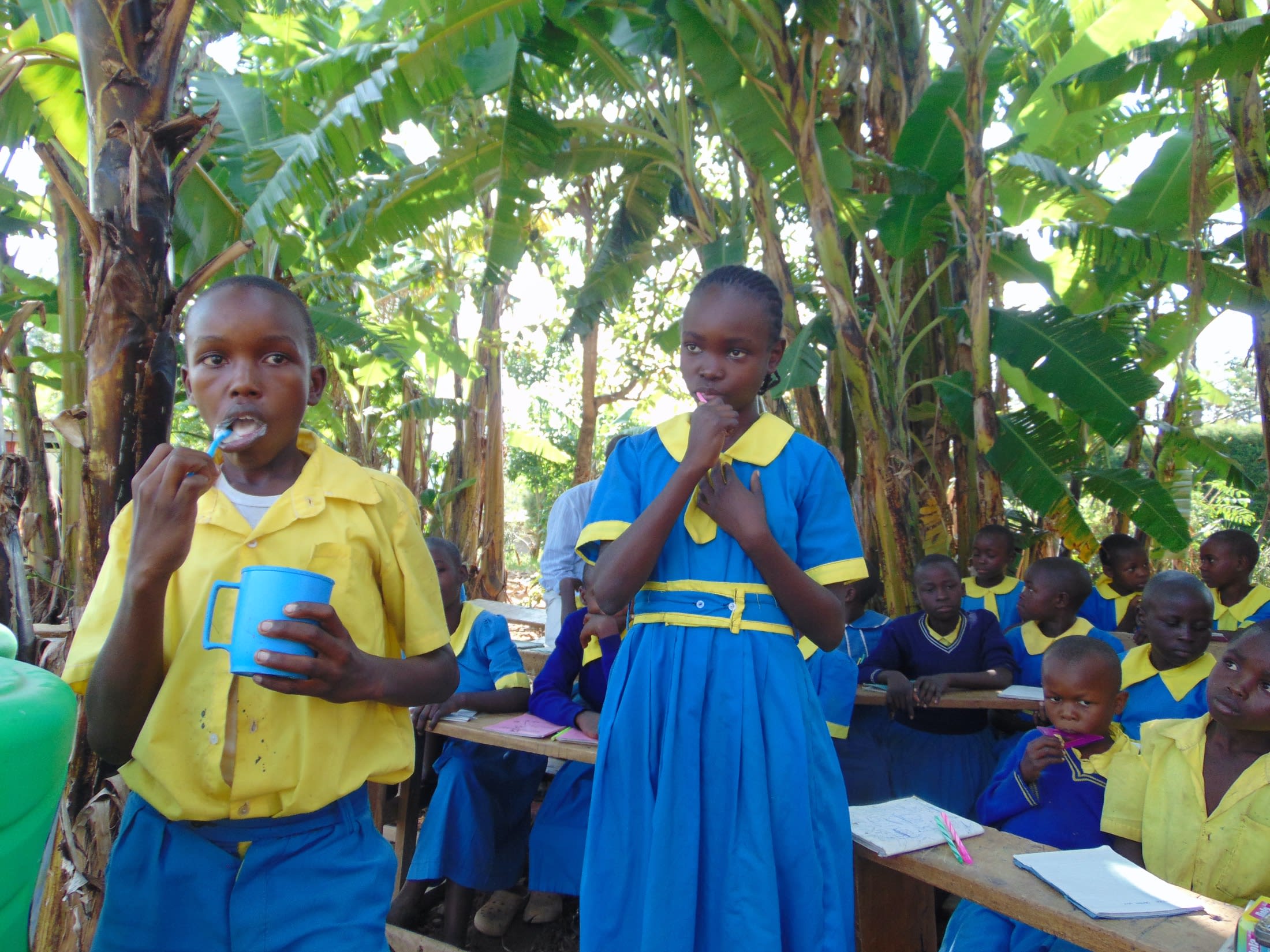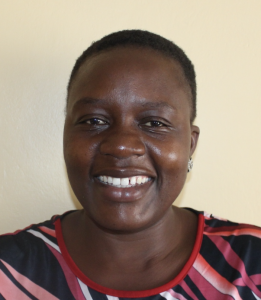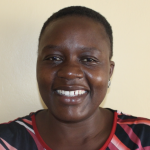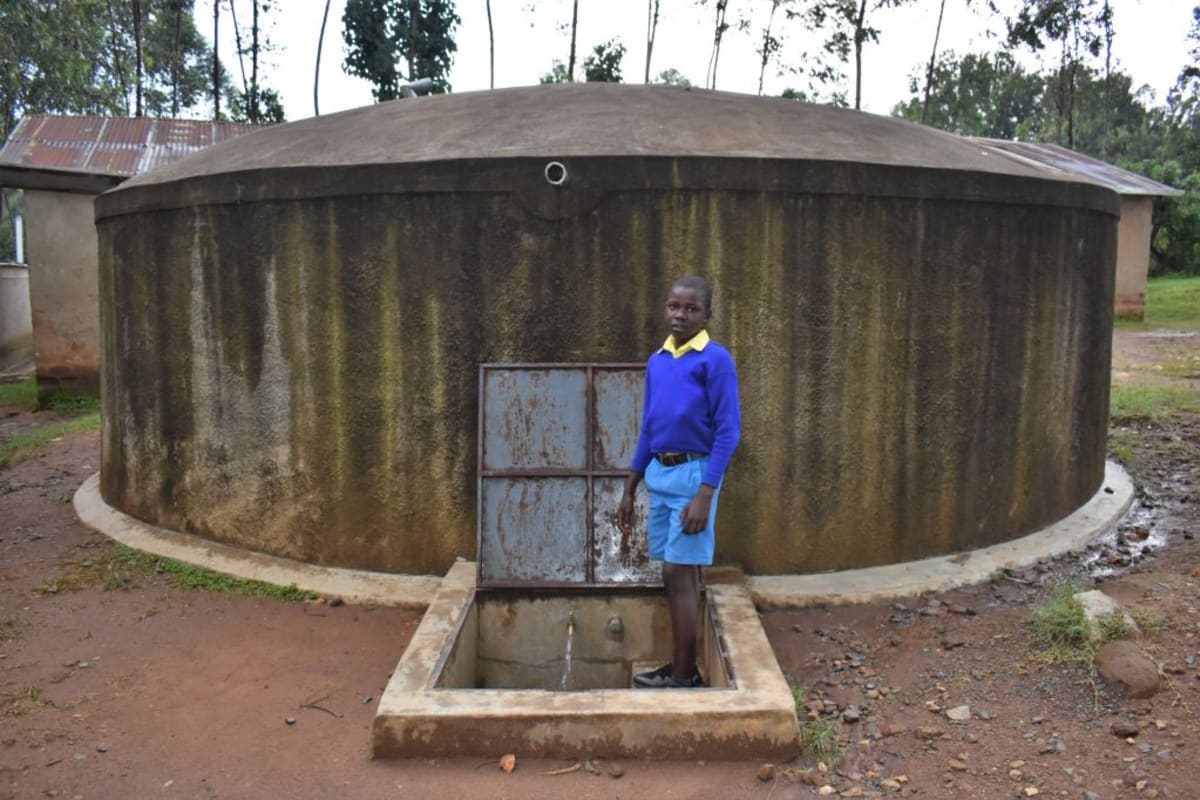March, 2020: Saride Primary School Project Complete!
Please note, all photos in this report were taken before social distancing recommendations went into place.
Saride Primary School in Kenya now has access to a new source of safe, clean water thanks to the completion of their rain tank, which has the ability to collect 75,000 liters of water! We installed new latrines and handwashing stations for students, and we trained students and staff on improved sanitation and hygiene practices. All of these components work together to unlock the opportunity for these students to live better, healthier lives.

"I am extremely excited that we have water on the school compound finally! We used to waste time going to fetch water during class time and this reduced our concentration in class. With water availability on the compound, I foresee us having more time for studying. We also look forward to being healthy as we drink clean and safe water," shared pupil Kipterer, who was voted President of the new student health club by his peers.
"As a health and hygiene president, I foresee a clean compound, including classes and latrines. This will enhance our health as we stay in a clean and conducive environment. In the past, cleaning of the classes and toilets was done hastily due to lack of water."

Student Kipterer
Teachers were just as excited as the students about the new rain tank on campus.
"Personally, since I came to this school 3 years ago, the greatest challenge has been lack of water. We would send pupils away from class to go to the stream to fetch water. This always affected my classes, but now with water on the school compound, I foresee reduced time-wasting and unnecessary commotions that interfere with classes...Water availability on the school compound will give us enough time to study...We look forward to better results in our examinations come the end of the year," shared teacher Mr. Kebaso Mosioma.

Student takes a drink of clean water from the rain tank
Rain Tank
Construction for this 75,000-liter rain tank was successful!
Parents, staff, and students helped our artisans gather everything needed for construction. All the while, the school cooks and community members prepared meals for the artisans, and the school provided accommodations for the artisans during their work. Local women and men helped our artisans with their manual labor, too.

Students hold up the water they helped carry to campus to aid in construction
The process officially began with our staff and school administration looking around the school compound to try and determine the best location for a new rain tank. This needed to be the best site with enough land and a nearby building with good, clean roofing to catch the rainwater.

Excavating the rain tank foundation site
Then, we cleared the site by excavating the soil to make level ground for the tank foundation. The foundation was cast by laying big stones on the level ground and reinforcing them using steel wire, concrete, and waterproof cement. Both the drawing pipe as well as the drainage pipe were affixed as the foundation was laid.

Attaching sugar sacks to wire wall skeleton
Next, the walls were formed using a skeleton of rebar and wire mesh with sugar sacks temporarily tied to the outside as backing. This was attached to the foundation’s edges so that the work team could start the Ferro-cementing process, in which the walls are layered with cement alternating with the inner and outer side until 6 layers of cement are in place. (The sugar sacks are removed once the interior receives its first 2 layers of cement.)

Passing the form for the central support pillar inside the tank
Inside the tank, 1 central and 4 support pillars were cast to ensure the dome does not fall down once cemented. Meanwhile, the inner wall was plastered while the outer walls received their roughcasting. Outside of the tank, the access area to the tap was dug, plastered, and a short staircase installed, along with a soak pit where spilled water can drain from the access area through the ground. This helps to keep the tap area dry and tidy.

Cement and plaster work inside the tank
Dome construction could begin after the tank walls had been given enough time to settle. Using similar techniques as used on the walls, the dome started as rebar, wire mesh, and sugar sacks and was attached to the tank walls before receiving cement and plaster. A small manhole cover was built into the dome to allow access for future cleanings and water treatments.

Pouring cement on the dome
Long wooden poles (about 75 of them!) were placed inside the tank to support the dome while it cured. A lockable manhole cover was fitted over the tap area, the gutters were affixed to the roof and the tank, and an overflow pipe was set in place at the edge of the dome for when the tank reaches capacity.
Once finished, the rain tank was given 3-4 weeks to undergo complete curing. Finally, the interior support poles and dome sugar sacks were removed, the tank was cleaned, and we waited as rain filled the tank with fresh water. When there was a sufficient volume in the tank, we treated the water and we officially handed it over to Saride Primary School.

As soon as it was ready, students and staff celebrated the presence of clean water on campus. The event was a great chance for us to acknowledge the school administration and students as the primary parties entrusted with the tools we have given, as well as remind them of our continued support as they develop. Happiness, thanksgiving, and appreciation were the order of the day flowing in all directions.

VIP Latrines
This project funded the installation of 6 new ventilated improved pit (VIP) latrines, half for girls and half for boys.

Girls pose in front of the new VIP latrines
Because of the best space available to dig the latrines' pits, we constructed all 6 doors in 1 block, though their use will still be divided between the students.

Boys pose in front of the new VIP latrines
All of these new latrines have cement floors that are designed to be easy to use and clean. And with a rain tank right on school property, there should be enough water to keep them clean.
Handwashing Stations
The 2 handwashing stations were set up during training and handed over to the student health club. These were placed outside of the girls’ and boys’ latrines to encourage handwashing after latrine use. Health club members will teach other students how to properly wash their hands at the stations, make sure the stations are filled with water, and work to ensure that there is always a cleaning agent such as soap or ash available.

Pupil using a handwashing station
New Knowledge
Hygiene and sanitation training was scheduled with the help of the school principal, who ensured that the training date would be convenient for students, staff, and parent representatives. Individual teachers helped by selecting students from each class to represent the others. When the training day arrived, facilitators Karen Maruti and Samuel Simidi deployed to the site.
Due to the excitement about the project in the school, almost the whole school wished to attend the training. Though we had to limit the group to a representative number, it still surpassed our expectations. 46 people attended training, including students, teachers, parents, and school board members. The training venue was within the school compound under the banana plantations. This venue was ideal as the classes were ongoing and hence minimal distractions came up. It was also cool and the participants enjoyed the nice breeze as the training progressed on.
Our first topic, a discussion on the students' participation and involvement in the project, was quite special. Right before the training had begun, the pupils were ferrying bricks from their neighborhood to school in preparation for construction.

Students carrying bricks from home to school for construction
As they settled down for training, the facilitators expected the participants to be tired and thought this might affect their participation. But when Karen introduced the topic of participation and involvement, everyone was alert and attentive. She particularly began by inquiring from the participants how they felt when they carried the bricks. The response was quite remarkable.
"Carrying 1 brick to school today is nothing compared to the endless trips I made to the stream to bring water whenever the tap ran dry," said a student named Purity. Then it was as if some fire had been ignited and everyone was talking about the project. The excitement was immense.

Student Purity
We covered a number of topics including personal hygiene such as bathing, oral hygiene, and the 10 steps of handwashing; environmental hygiene; child rights; operation and maintenance of the rain tank, latrines, and handwashing stations; and leadership and governance. During the latter, the students elected their peers to lead their newly formed student health club.
The club will be greatly involved in the water, sanitation, and hygiene project management at school and will be responsible for encouraging good health and hygiene practices amongst their peers, teachers, and the larger community. We involved stretches, dances, and physical activities in between each topic to keep the pupils’ energy up and their minds active. By the end of the training, each pupil understood their role in sustaining clean water and good health within their school community.

Toothbrushing demonstrators
Dental hygiene was a particularly memorable topic. Facilitator Karen began by asking how many people had not brushed their teeth that day and half of the group raised their hands including the Board of Management chairperson. The entire group burst out laughing because they did not expect the chair to not have brushed his teeth. The facilitators took the opportunity to encourage everyone that after the training, no one should have an excuse for not brushing their teeth.
Karen brought in the concept of adopting locally available materials and even demonstrated how to use a soft chewed stick in place of a toothbrush or floss. The facilitators did not leave any stone unturned as they discussed the myths and facts about dental hygiene. By the end of the topic, the pupils were heard speaking in low tones about trying out the experience of the chewed stick as they went home.

Happy student showing off the toothbrush she received at training
"This training has been very valuable to me. The knowledge I've gained, especially on dental hygiene - I will ensure that I share it and transform my friends and my siblings. I've learned that the toothbrushes cannot be shared and the hawkers' toothpaste is not always good as it is hawked under the sun when it should be stored in a cool, dry place," shared Purity at the end of training.

Elected student health club leaders along with the club's staff patron Carolyne Martini (left), Senior Teacher Kebaso Mosioma (center), and Facilitator Karen Maruti (right)
When an issue arises concerning the water project, the students and teachers are equipped with the necessary skills to rectify the problem and ensure the water point works appropriately. However, if the issue is beyond their capabilities, they can contact our team of field officers to assist them. In addition, we will continue to offer them unmatchable support as a part of our ongoing monitoring and maintenance program.
Thank you for making all of this possible!


 Rainwater Catchment
Rainwater Catchment
 Rehabilitation Project
Rehabilitation Project












































